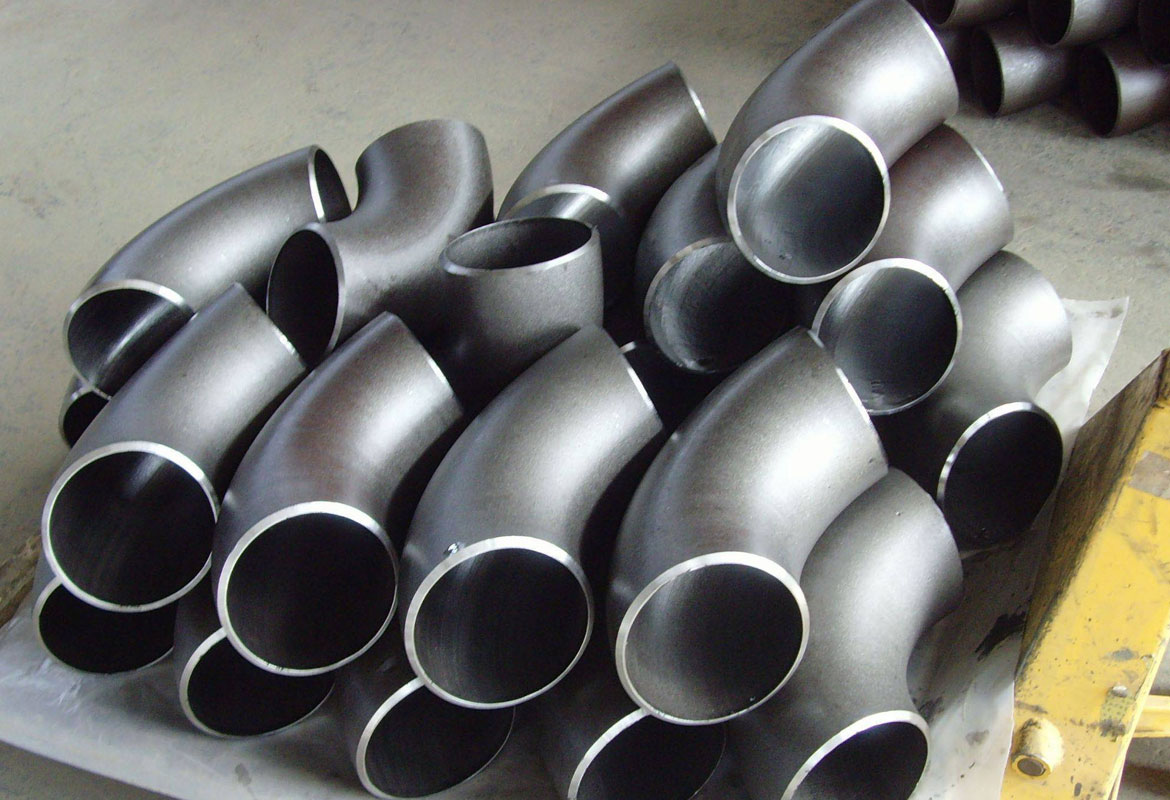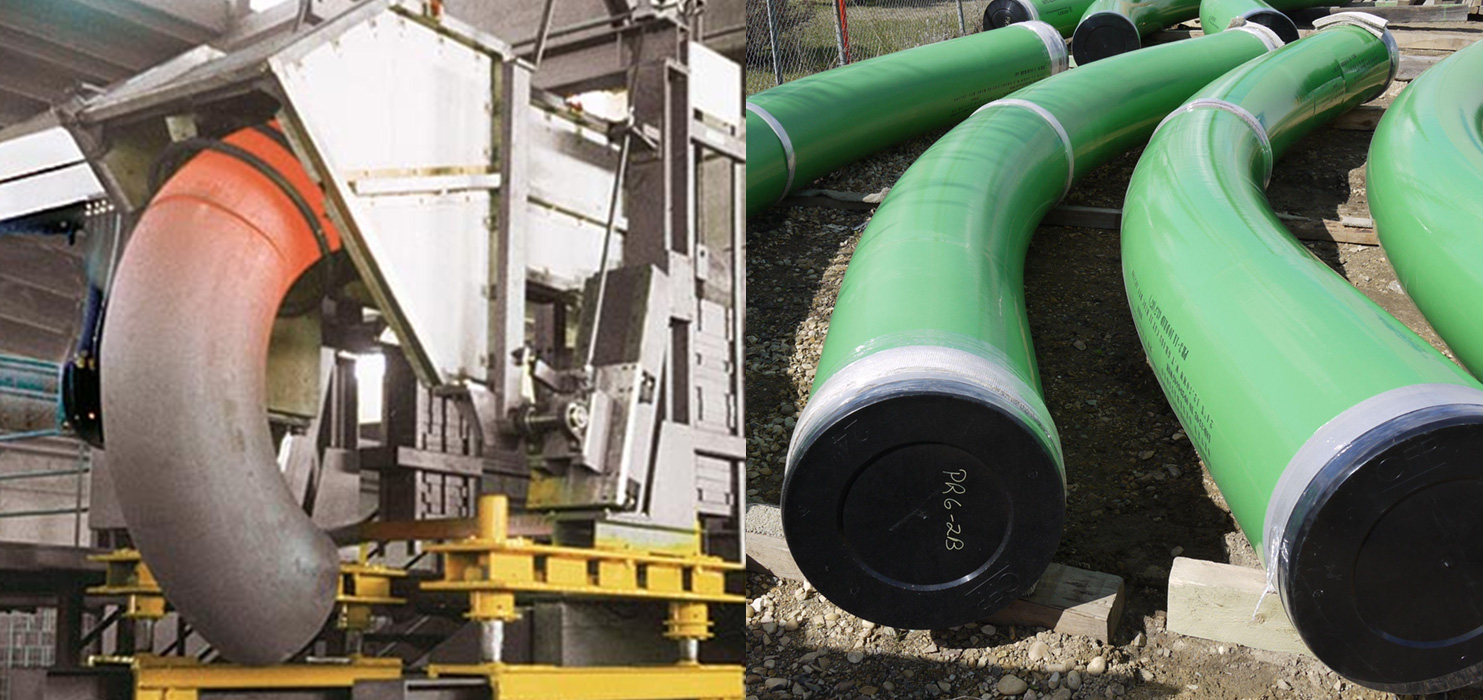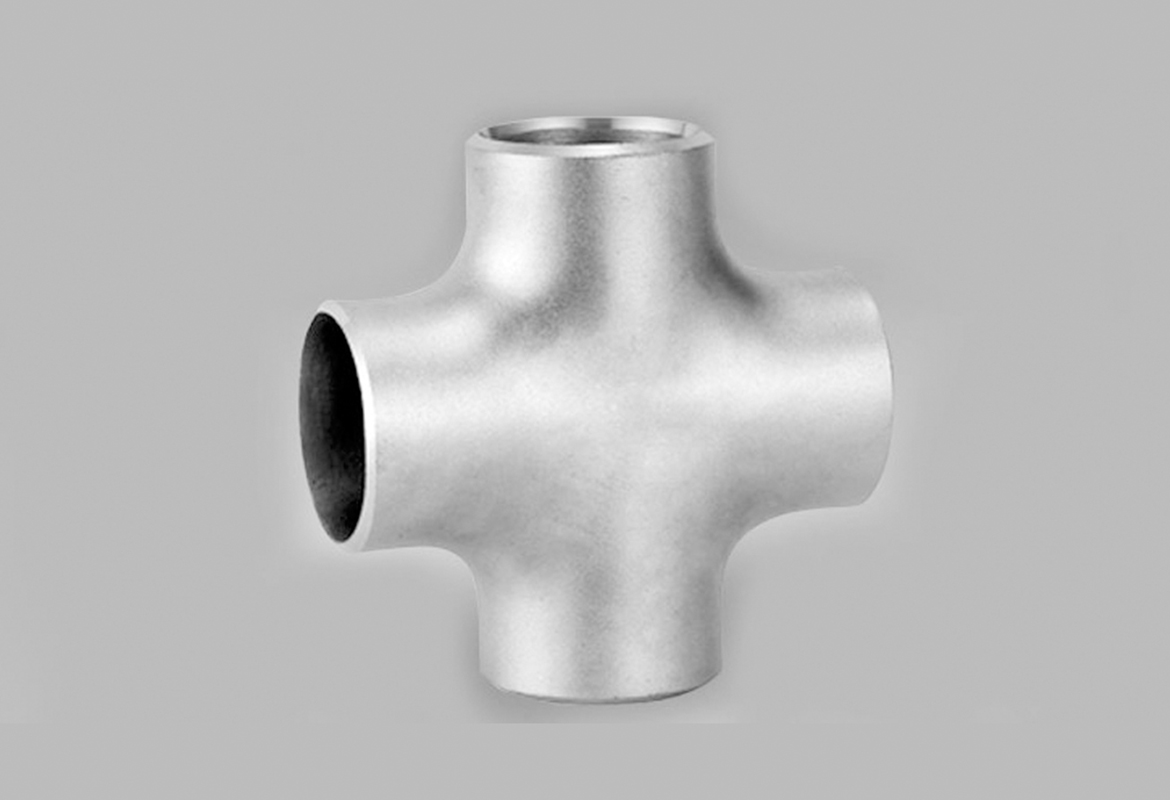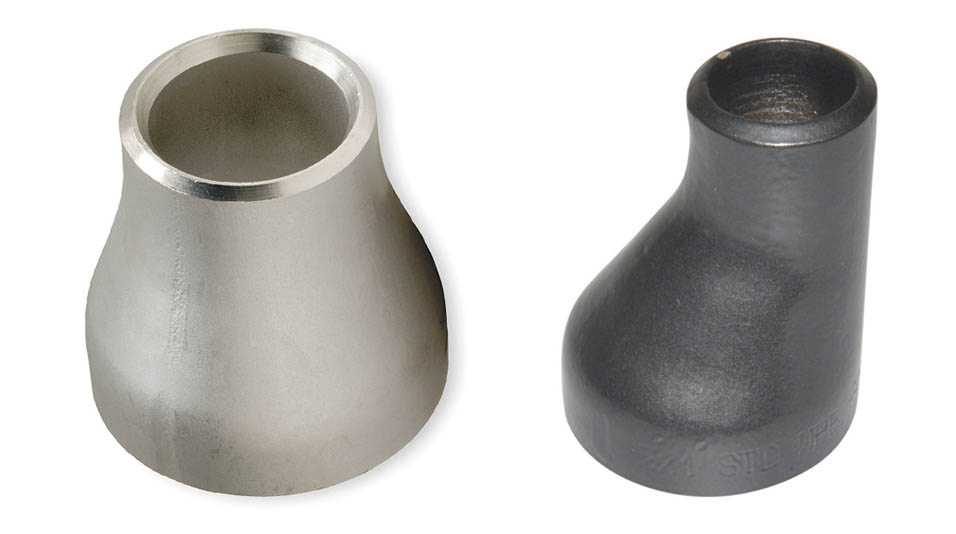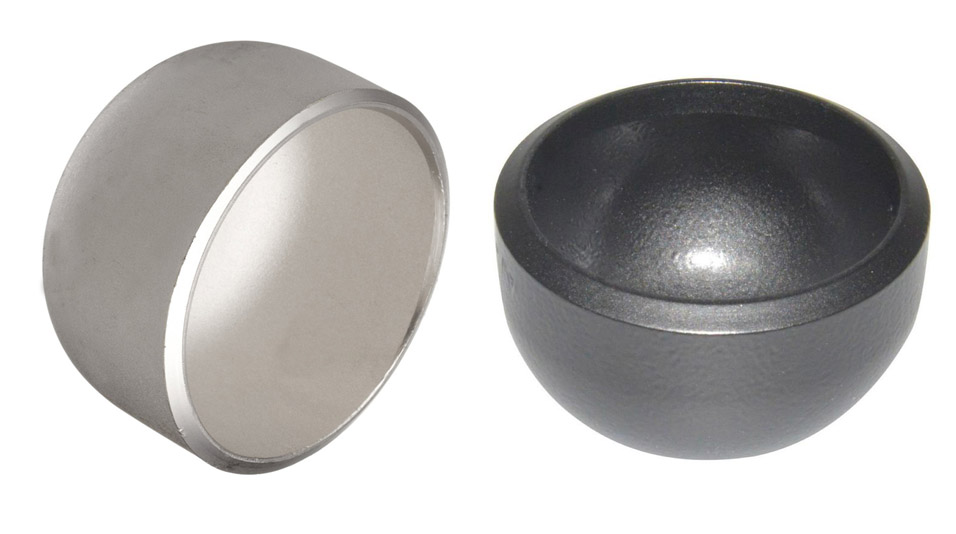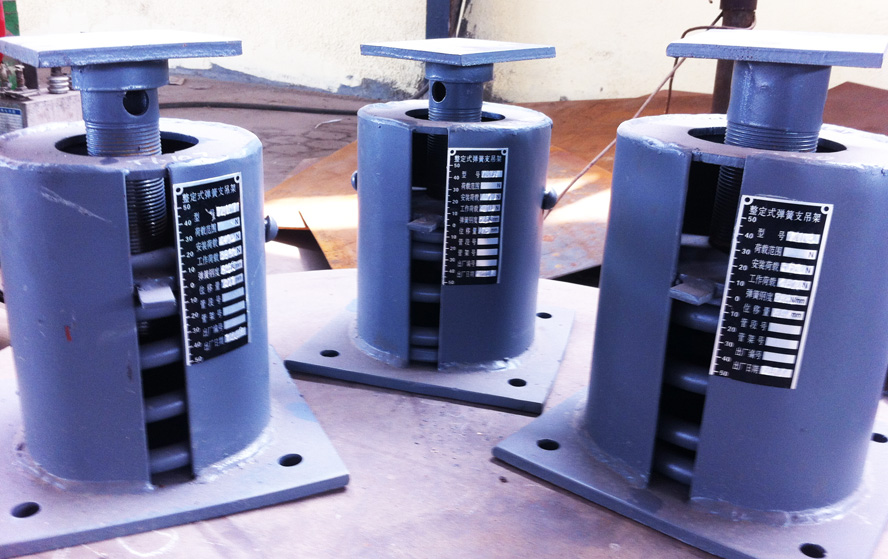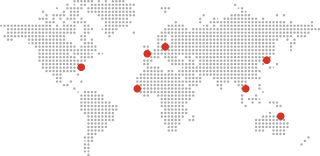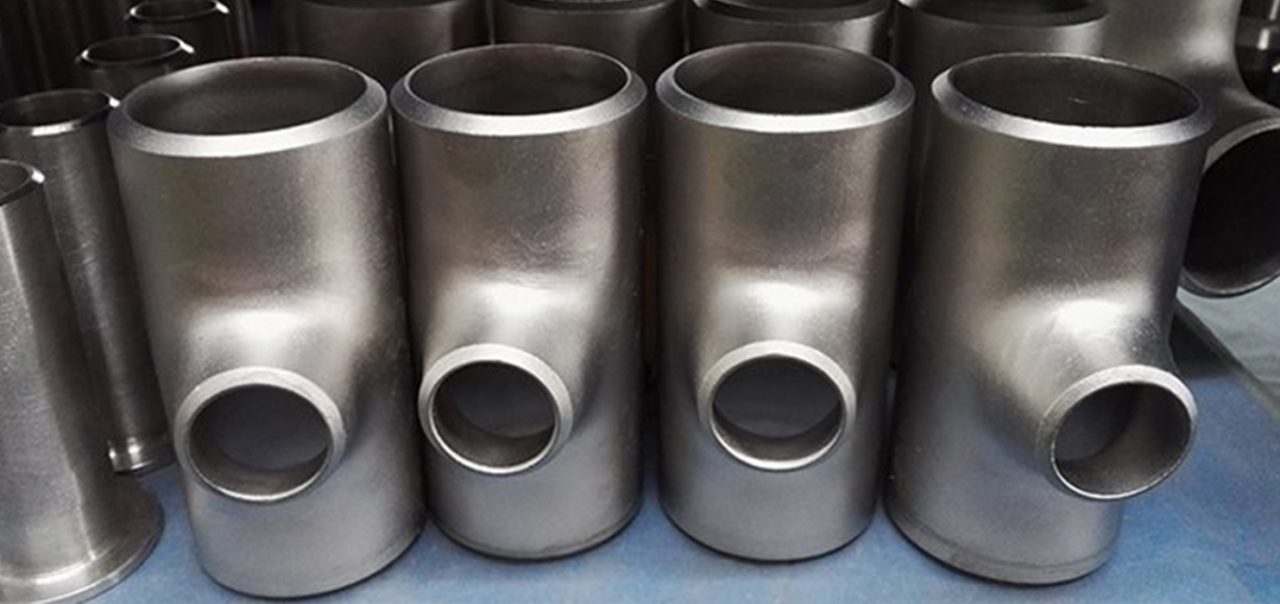
La camiseta de la tubería de acero es la pieza más común utilizada cuando hay una rama en la tubería principal.. Cuando el tamaño de la rama es el mismo que se usa el tubo de encabezado, se usa el TEE igual. Cuando el tamaño de la rama es menor que el tamaño del encabezado, se usa una camiseta desigual, entonces se usa.. Actualmente, La formación de hidroforming y prensa en caliente se utilizan para fabricar una camiseta de acero hecha de tubería sin costuras. La camiseta de tubería de acero se utiliza para conectar tuberías en redes para transportar mezclas de fluidos en dos fases. Se puede almacenar en cajas sin fumigación o soportes de madera.
Nuestra empresa proporciona una camiseta de tubería de acero de diferentes tamaños, como 1/2″ y 24″, Accesorios sin costuras DN15 y DN600, 4″ y 24″, Accesorios de soldadura DN100 y DN600 o 12″ y 78″, Accesorios de soldadura a tope DN300 y DN1900. También hay diferentes grosor de la pared. El espesor máximo de la pared de la camiseta de tubería de acero es 150 mm y otros números de horario son SCH10, sch20, sch30, enfermedad de transmisión sexual, sch40, sch60, xs, sch80, sch100, sch120, sch140, sch160, xxs, sch5s, sch20s, sch40 y sch80.
Especificaciones de la camiseta de tubería de acero
| Tipo | |||
| Camiseta sin costura | Camiseta de soldadura | Camiseta de soldadura a tope | |
| Diámetro exterior | 1/2″ ~ 24″ | 4″ ~ 24″ | 12″ ~ 78″ |
| Grosor de la pared | 3 milímetros ~ 200 milímetros | ||
| Tipo de producto | TEE igual y TEE desigual | ||
Camiseta de tubería Sytle:
La camiseta de tubería se utiliza para distribuir o recolectar el fluido de la tubería de ejecución. Es una pieza corta de tubería con una rama de 90 grados en el centro. Hay dos tipos de tee utilizados en la tubería., Igual / Tee recto y reduciendo / Camiseta desigual.
Camiseta recta
En la camiseta recta, El diámetro de la rama es el mismo que el diámetro de la carrera (Encabezamiento) Pipa.
Reducción de la camiseta
En la reducción de la camiseta, El diámetro del tamaño de la rama es más pequeño que el diámetro de la carrera (Encabezamiento) Pipa
Camiseta de barrio
Una camiseta barrada que también se conoce como camiseta de scrapper se usa en tuberías que están pigged. La rama de la camiseta tiene una barra de restricción soldada internamente para evitar que el cerdo o el desastre ingresen a la rama. Las barras están soldadas en la rama de una manera que permita el paso libre de restricción del cerdo desde la tubería de carrera.
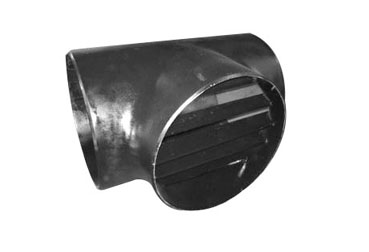
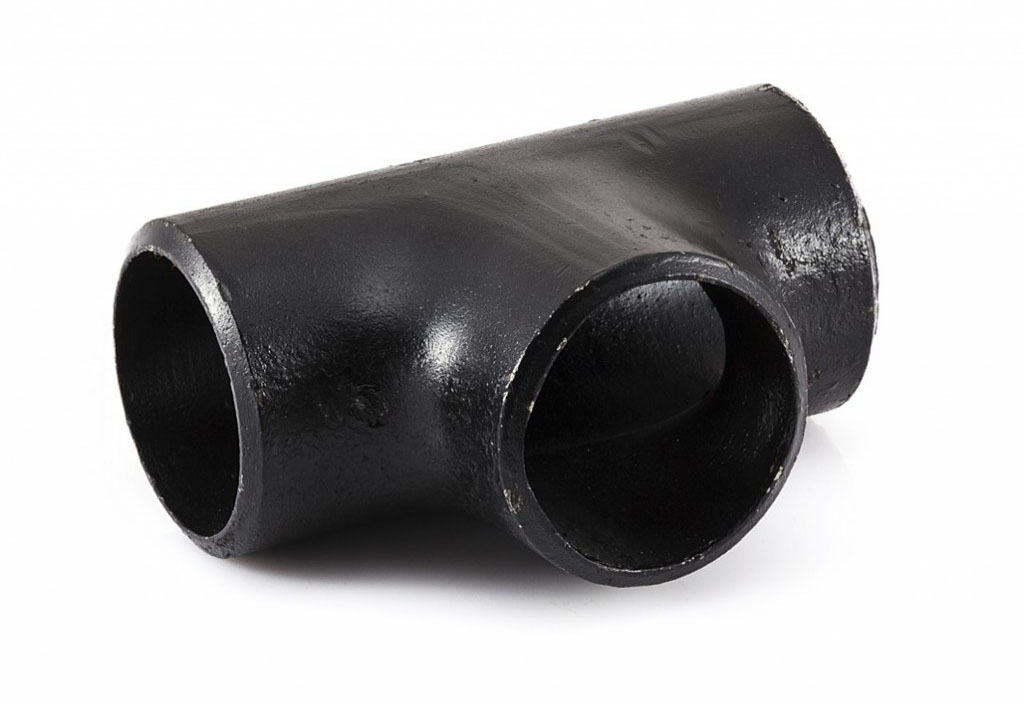
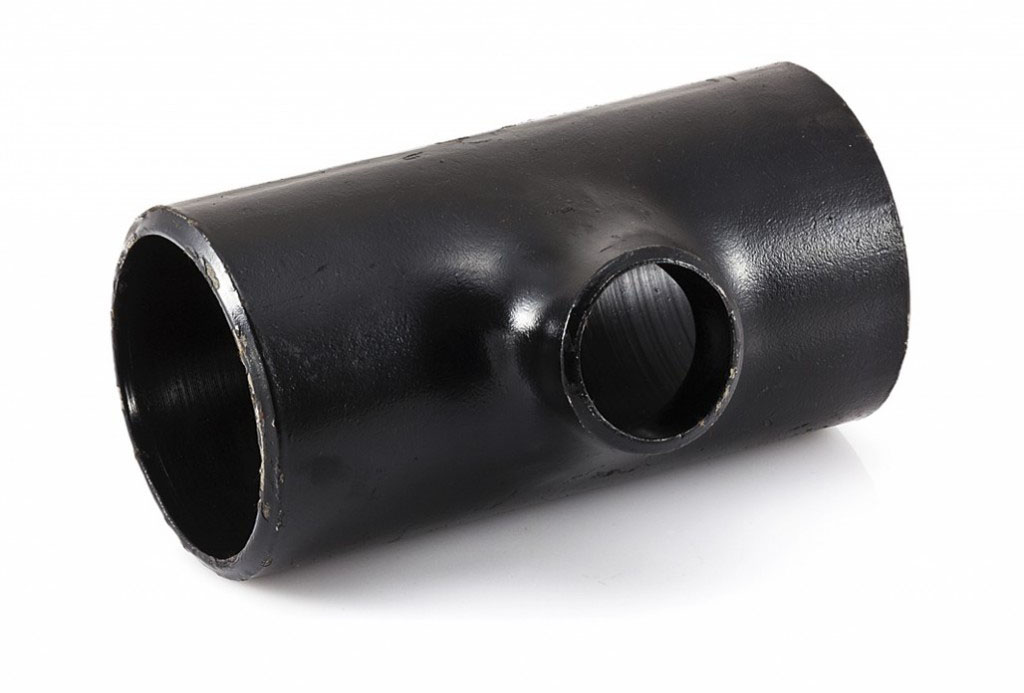
Materiales de tee de tubería
Además, Nuestra camiseta de tubería puede estar hecha de diferentes materiales y la información detallada se enumera aquí..
Acero carbono: ASTM/ASME A234 WPB、WPC
Acero aleado: ASTM/ASME A234 WP 1-WP 12-WP 11-WP 22-WP 5-WP 91-WP 911
Acero inoxidable: ASTM/ASME A403 WP 304-304L-304H-304LN-304N, ASTM/ASME A403 WP 316-316L-316H-316LN-316N-316Ti, ASTM/ASME A403 WP 321-321H ASTM/ASME A403 WP 347-347H
Acero de baja temperatura: ASTM/ASME A402 WPL 3-WPL 6
Acero de alto rendimiento: ASTM/ASME A860 WPHY 42-46-52-60-65-70
Camisetas rectas y reduciendo
El propósito principal de un tee es hacer una rama de 90 ° desde la carrera principal de tubería. Estándar que hay 2 posibilidad, en nombre del tee igual y la reducción de la tee. El tee igual (o camiseta recta) se usa ya que la rama tiene el mismo diámetro que el tubo de ejecución. La camiseta reductora se usa ya que la rama tiene un diámetro más pequeño como la tubería de ejecución.

Dimensiones y estándares
Cuando hablamos de un tee nps 3, Se pretende una camiseta igual o recta. Con un tee nps 3 incógnita 2 Se pretende una camiseta reductora. A pesar de, oficialmente un tee reductor se indicará por 3 diámetros, a saber 3 incógnita 3 incógnita 2 (A x B x C). La medida de A y B significa el tamaño nominal de la tubería de la tubería de ejecución, C Medida significa el tamaño de la tubería nominal de la salida.
Esta designación en realidad es superfluo, pero proviene del momento en que las camisetas estaban disponibles en 3 diferentes extremos de diámetros, como
4 incógnita 3 incógnita 2 (A x B x C). En esta implementación, por supuesto, es necesario, para especificar 3 diferentes tamaños.
Ese tipo de camisetas probablemente ya no esté disponible. Aplicar un tee igual con un reductor concéntrico o excéntrico es ahora la práctica habitual.
Una camiseta recta o igual de tope está disponible para todos los diámetros comunes.
Una camiseta reductora no, Porque no se producen muchos diámetros, o no se puede producir.
Como ejemplo: un tee nps reductor 6 incógnita 4 es un artículo estándar para la mayoría de los proveedores, Pero una reducción de NPS de tee 16 incógnita 2 Probablemente no esté disponible por ningún proveedor.
Tampoco sería económico usar un NPS 16 Tee con un NPS 2 salida; En tales situaciones se utilizará un ajuste de rama o se realizará una conexión de rama.
Además de las camisetas definidas, Hay cruces rectas y reductores.
Las cruces rectas son generalmente artículos de stock, La reducción de cruces a menudo es difícil de obtener.
Nunca he usado esas camisetas y nunca he visto en la práctica, al menos no en la industria petro y química. Se utilizarán donde el espacio sea limitado, por trabajo de revisión, en la industria naviera, etc..
TEE de grosor de la pared
Por la forma de una camiseta, El grosor de la pared puede ser un elemento crítico. ASME B16.9 solo estandariza las dimensiones de extremo a extremo, dimensiones de centro a extremo y algunas “cuadrícula” tolerancias dimensionales.
El grosor de la pared en la ubicación de la línea de soldadura incluso está estandarizado, Pero no por el resto del ajuste. El estándar establece que la tolerancia mínima estará dentro 12.5% del grosor mínimo de pared ordenado de la tubería. Una tolerancia máxima se especifica solo en los extremos del ajuste.
Muchos proveedores de camisetas de soldadura (y codos) Proporcione un horario mayor grosor para que el espesor de la pared suficiente, Después de formar, restos. En Tee's, el radio de la entrepierna (t) varía de un fabricante a otro, Pero algunos se establecen como un requisito, 1.3 veces el grosor de la pared para mantener la entrepierna.
Tolerancias dimensionales Camas rectas ASME B16.9
| Tamaño nominal de tubería | 1/2 a 2.1/2 | 3 a 3.1/2 | 4 | 5 a 8 | 10 a 18 | 20 a 24 | 26 a 30 | 32 a 48 |
| Dié afuera en bisel (D) |
+1.6 -0.8 |
1.6 | 1.6 | +2.4 -1.6 |
+4 -3.2 |
+6.4 -4.8 |
+6.4 -4.8 |
+6.4 -4.8 |
| DIA DIA al final | 0.8 | 1.6 | 1.6 | 1.6 | 3.2 | 4.8 | +6.4 -4.8 |
+6.4 -4.8 |
| Centro para terminar (c / METRO) | 2 | 2 | 2 | 2 | 2 | 2 | 3 | 5 |
| Muro thk (t) | No menos que 87.5% de grosor de la pared nominal | |||||||
Las tolerancias dimensionales están en milímetros a menos que se indique lo contrario y sean iguales ±.

